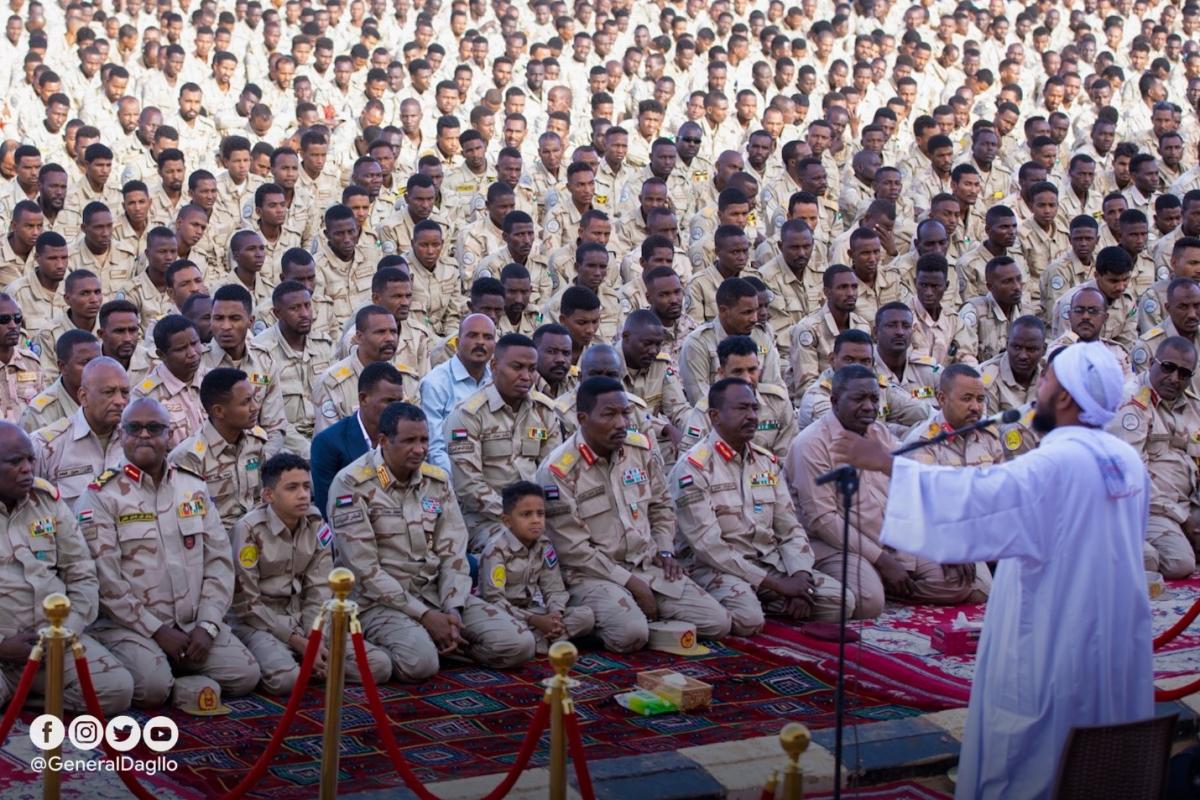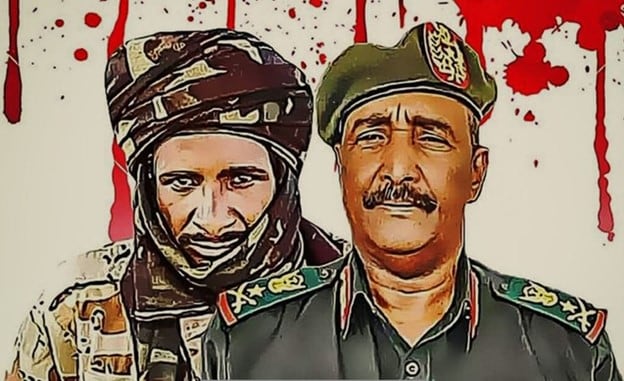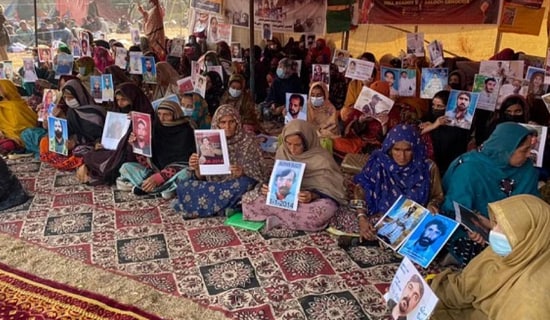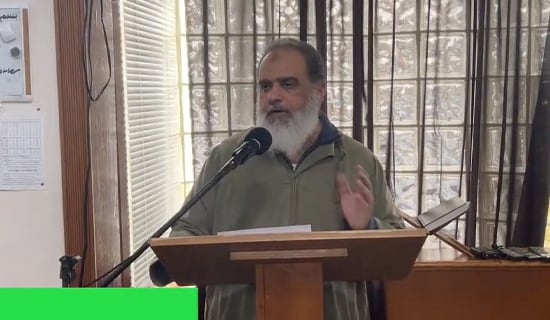Sudan is a country in deep crisis. Staple food costs have increased 300 percent since last year. It has faced both severe drought and flooding, 7,000,000 school-age children are out of school, and there is a specter of famine in the land. There is an ongoing struggle for power between brave civilians and the military junta, between haves and have-nots – those in the center and at the margins. Every single indicator of progress has declined since the Sudanese military launched a catastrophic coup almost a year ago on October 25, 2021, against the civilian parts of an interim government intended to take the country to democratic elections.

Despite more recent offers by the military to "give back" political control to civilians (but keeping all their military privileges and power) while blaming politicians for the crisis, there is still little progress. The Sudanese Armed Forces (SAF) seem to be putting a brave face on their own disastrous governance and bloody record, with the editor of the SAF newspaper boasting on October 6, 2022 that the army "had never pointed its guns at the breasts of its people and was never defeated by a rebel movement but was and remains the chief of all councils."[1]
The Army is seemingly all-powerful in Sudan but that is somewhat of an illusion. It can orchestrate the killing of protestors with impunity and control Sudan's largest bank and a vast private economic empire. But it is not all-powerful because Sudan has two substantial armies. There is SAF, the regular army from which came Sudan's past military dictators, including Omar Al-Bashir and the current Abdel Fatah Al-Burhan.
And then there is, of course, the Rapid Support Forces (RSF), which has roots in Darfur's Arab militias, the paramilitary irregular "Janjaweed" of Darfur's bloody counterinsurgency. The RSF formally came into being in 2013 and was initially placed under the command of Sudan's intelligence apparatus (NISS), rivals of the military, under a NISS general. Its role was both to serve as rapid response shock troops, not only in Darfur but in Blue Nile, Kordofan, and even in Khartoum and to serve as a counterweight to SAF should it launch a coup against the president. Some years later, RSF, under its emblematic leader General Muhammad Hamdan Daglo "Hemedti" would report directly to President Al-Bashir instead of NISS.
In 2019, Hemedti, a desert warlord with a third-grade education, performed two great if self-serving services to the future of Sudan. First of all, he and the RSF "switched sides" and refused to suppress the popular protests that successfully called for the fall of the Islamist Al-Bashir regime.[2] Secondly, Hemedti and the RSF seemed to have prevented a coup within a coup from the powerful head of NISS at the time, Salah Ghosh.
Since 2019 Al-Burhan, the head of the ruling council, and his deputy Hemedti, have more or less shared power. Both served in implementing the Al-Bashir regime's repressive activities in Darfur and elsewhere, both oversee corrupt institutions deeply compromised in bloodshed. Neither is any sort of closet liberal or democrat. But they are not quite the same. Al-Burhan and SAF represent those who have always ruled and who intend to keep on ruling in Sudan, as the SAF newspaper described it, a SAF "which was and is the chief of all councils," the handpicked graduates of the military academy chosen because of connections and politics.
Hemedti and RSF are rude upstarts, people from the peripheries. RSF is not only filled with Darfuri Arab tribesmen, but also with former non-Arab Darfuri rebels and with soldiers from nomadic clans that straddle the border with Chad. Their second largest recruiting area is also from the margins, from Blue Nile state bordering South Sudan. It is RSF, more than SAF, that went to fight, for money, in bloody foreign conflicts in Yemen and Libya. Hemedti has tried, with mixed results, to project a populist image since 2019, while Al-Burhan channels an image of the caretaker statesman head of state and denies any SAF-RSF tension.[3]
According to scholar Jerome Tubiana, SAF has a strength between 120,000 and 200,000 while RSF has between 75,000 and 100,000 men under arms.[4] RSF has more combat experience and seems to be the better military force. In 2008, I watched in Khartoum as a raiding force of Darfur rebels, opponents of but similar to the Janjaweed, evaded an SAF armored division and SAF aircraft in mounting a brazen attack on the Sudanese capital. The rebels were stopped by NISS troops rather than an army caught flatfooted by desert raiders.

SUPPORT OUR WORK

Driven by personal ambition, institutional rivalry, and a complicated past, both SAF and RSF look for allies in this twilight struggle occurring in the shadow of Sudan's many other crises. Hemedti is hated particularly by Sudan's Islamists for betraying Al-Bashir and SAF remains a safehaven for military Islamists and a supporter of civilian ones from the former regime.[5] Among recent returnees to Sudan under military rule is Al-Bashir's last prime minister, Muhammad Tahir Ayala.[6] SAF has also purged senior officers suspected of being reformers in the past year and Hemedti has attempted to win over disgruntled SAF officers.[7] There are several factions within SAF – "nationalists" loyal to Al-Burhan and to SAF continuity as a dominant institution within Sudan and then the faction of Islamists loyal first to the return of the dominance of political Islam in Sudan. For now, those two SAF factions coexist and cooperate, against the civilians and against Hemedti.
There is no doubt, for example, that the Islamists at the Turkey-based Sudanese satellite channel Tayba Television increasingly tend to praise SAF while demonizing Hemedti. Some observers believe that the plan is to have SAF get rid of the civilians (and Hemedti) and then an Islamicized SAF would remove Al-Burhan, who is seen as still too ambivalent toward the return of full Islamist rule. On Tayba TV, the RSF leader is portrayed as a man out of his depth and either foolishly or cynically allying himself with the civilian "Forces for Freedom and Change" (FFC) movement as part of a plot supposedly orchestrated by the West and former SPLM-N leader Yassir Arman, who as a Northern Sudanese, former communist and comrade of the late John Garang is considered a renegade and an apostate worthy of death by the Islamists.[8]
While SAF leans toward the Islamists and Hemedti leans toward the civilian change movement (which is, not surprisingly, deeply suspicious of Hemedti's ulterior motives), both look for other allies.[9] Both fight over control of the civil service, an important source of patronage and an essential ingredient in actually running a government, something both military factions are ill-prepared to do by themselves.[10] Some former Darfur rebels, like the Islamist JEM, lean towards SAF, while others are closer to Hemedti.
SAF would dearly like to see unrest in Darfur draw more of Hemedti's forces away from the capital. SAF-connected sources have also complained about RSF acquiring heavier and more advanced weapons, a bone of contention between RSF and SAF's armored corps going back years.[11] Both sides are evenly matched when it comes to foreign allies, they share the same friends, although some are more committed to SAF while others lean towards Hemedti. Al-Burhan recently told his closest allies, the Egyptians, that Hemedti was growing closer to a major adversary of Egypt, the Ethiopians.[12]
If there was to be an open battle, one would think that the RSF would be well-positioned to win. But in a more likely political battle, the Darfuri Arabs of RSF are politically and socially hamstrung, they are not part of the traditional ruling elite, certainly nothing like the elite cadres of SAF and of the wily veterans of Al-Bashir's old party. One anti-RSF YouTube sock puppet account mocked the unit's intelligence branch, noting that they were actually illiterate criminals.[13]
Ideally, Sudan's future will be decided solely by the people at the ballot box, and a civilian government would prioritize cutting down to size a parasitical military establishment which is far too large and entitled. But absent such a rosy scenario, which is much to be hoped for and worked towards both inside Sudan and by the international community, Sudan may be ruled once again, directly or indirectly, by the men with guns. The question is, perhaps, which ones, the upstarts or the elite?
*Alberto M. Fernandez is Vice President of MEMRI.
[1] Twitter.com/WakeepAr/status/1577954578082955264, October 6, 2022.
[2] Al-ain.com/article/sudan-hemedti-fatwa-protesters, September 9, 2022.
[3] Alquds.co.uk/%D8%A7%D9%84%D8%A8%D8%B1%D9%87%D8%A7%D9%86-%D8%A7%D9%84%D8%AC%D9%8A%D8%B4-%D8%A7%D9%84%D8%B3%D9%88%D8%AF%D8%A7%D9%86%D9%8A-%D9%88%D8%A7%D9%84%D8%AF%D8%B9%D9%85-%D8%A7%D9%84%D8%B3%D8%B1%D9%8A%D8%B9, September 6, 2022.
[4] Usip.org/publications/2022/04/darfur-after-bashir-implications-sudans-transition-and-region, April 20, 2022.
[5] 3ayin.com/islamists-2, September 2022.
[6] Youtube.com/watch?v=YdBRishVdxE, October 5, 2022.
[7] Alrakoba.net/31759252/%D8%A7%D9%84%D8%AC%D9%8A%D8%B4-%D9%8A%D9%88%D9%82%D9%81-%D9%82%D9%88%D8%A9-%D9%85%D9%86-%D8%A7%D9%84%D8%AF%D8%B9%D9%85-%D8%A7%D9%84%D8%B3%D8%B1%D9%8A%D8%B9-%D8%AD%D8%A7%D9%88%D9%84%D8%AA-%D8%AF, September 21, 2022.
[8] Youtube.com/watch?v=__8bhV_5_x0, September 14, 2022.
[9] Youtube.com/watch?v=Pe_RJ9x4TqU, August 18, 2022.
[10] Sudantribune.com/article264684, September 28, 2022.
[11] Alnilin.com/13266432.htm, July 14, 2022.
[12] Alaraby.co.uk/politics/%D8%A7%D9%84%D8%A8%D8%B1%D9%87%D8%A7%D9%86-%D9%81%D9%8A-%D8%A7%D9%84%D9%82%D8%A7%D9%87%D8%B1%D8%A9-%D8%B2%D9%8A%D8%A7%D8%B1%D8%A9-%D9%85%D8%AF%D9%81%D9%88%D8%B9%D8%A9-%D8%A8%D8%A7%D9%84%D8%AE%D9%84%D8%A7%D9%81-%D9%85%D8%B9-%D8%AD%D9%85%D9%8A%D8%AF%D8%AA%D9%8A, September 25, 2022.
[13] Youtube.com/watch?v=XanfCt69gC0&t=291s, September 23, 2022.




